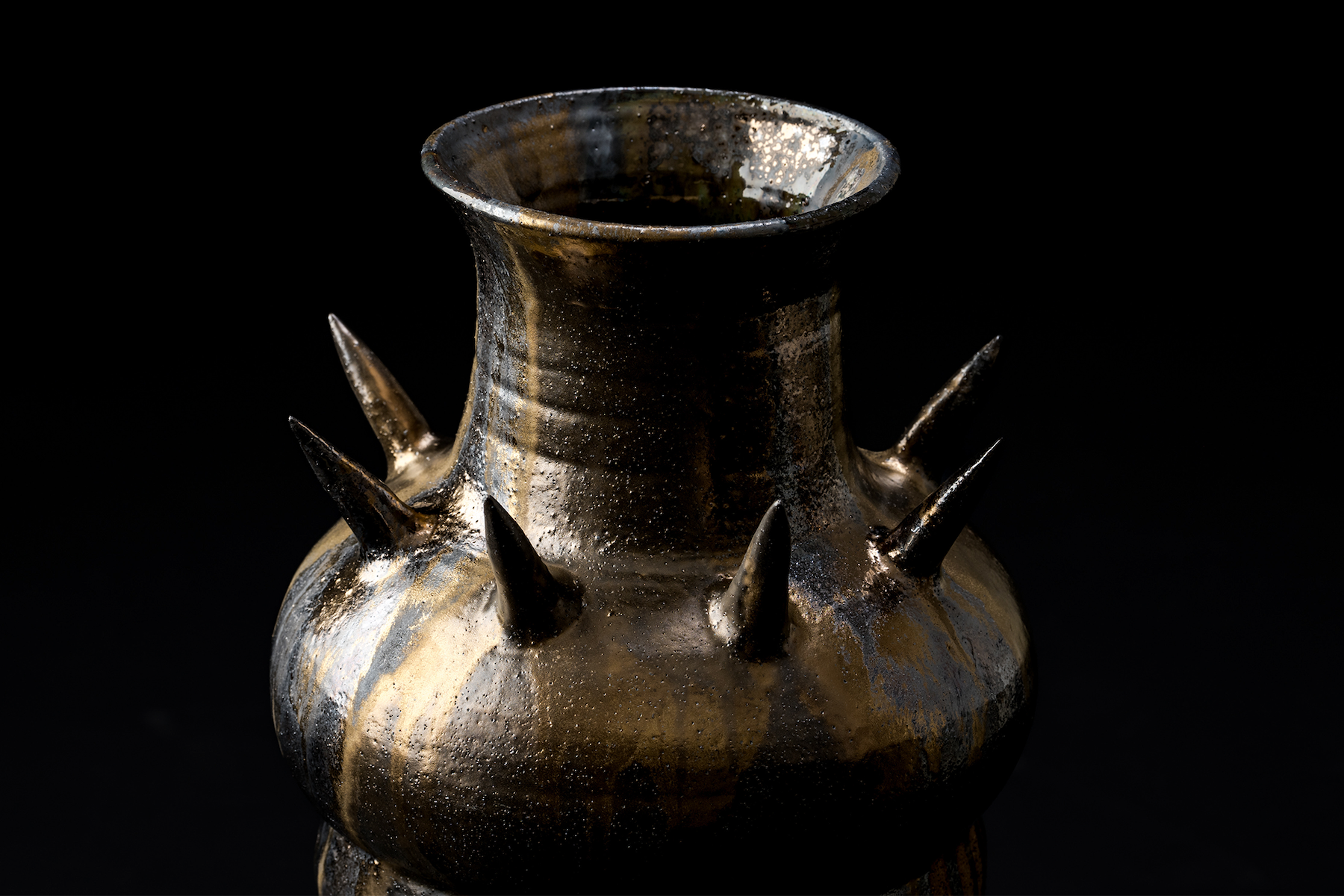During the opening night of Minefield: The Art of Mona Ryder, I was conscious of the significance of this show, which recognises Ryder’s more than 40 years’ contribution to Australian art. Ryder’s practice has generated a legacy of art making in Queensland. As a QUT Alumni, it seems appropriate to see such a consequential collection of her artworks on display at the QUT Art Museum, with pieces sourced from private collections and institutions across the state, including Griffith University, HOTA Gallery, the University of Queensland and the Queensland State Library.
One of my initial impressions of the exhibition is Ryder’s unabashed embrace of unconventional materiality. Her artworks feature traditional media, such as painting, lithography, etching and drawing, as well as sculptural garden hoses, mussel shells (collected from dinner parties with friends), ironing boards and even farm implements. These found objects are suggestive of the artist’s everyday domestic experience and are rich with feminist undertones. This feminism continues in Ryder’s satirical challenges patriarchal tropes, her stories of motherhood and domestic labour, and her reclamation of the female body through central core imagery.
Navigating through the exhibition, I first encountered Les animaux sauvages (2005) and Pricks (2004). In the former, six stuffed red neckties are mounted on the wall in a line of phallic-like assemblage. They are positioned at a height to loom over the viewer, necessitating a look upwards to take in their form. Perpendicular to the necktie sculptures is a small canvas, the word ‘pricks’ stitched with red thread. Three stitched lines ejaculate from the top. Via Ann-Maree Reaney, I understand, Pricks refers to Ryder’s poem, Lily White. This reads in part:
What a prick
We’re clever, little boys
Naughty little boys
See the glow on our soft pink cheeks
Stuff your tie
Curl it at the end
The artist presented excerpts of this poem during an artist talk for the 2005 National Sculpture Prize, which included Les animaux sauvages. Together, these two artworks make a mockery of the patriarchal narrative that enables men to accumulate positions of power in white-collar hierarchical structures. These set the tone for the exhibition: exposing gendered roles and stereotypes with a healthy dose of theatrics and good humour.
Nestled between blockbuster paintings and large scale installations are a series of monochrome lithographs and etchings produced during the late 1970s and 80s. Maybe it’s because I am a new mother that I found myself attracted to the detail in these quieter works, which touch on child rearing and motherhood. 11 Curtained, Staged room with Tree (1980) features a nude female figure, seated on a chair and holding a small child. The curtains have been pulled open to expose this private moment between mother and son. The print Davida & I (1979), who I assume to be Davida Allen, also caught my attention. Allen is another quintessential Queensland artist, known for navigating the challenges of raising children throughout her professional career. This adds further complexity to the theme of motherhood in Ryder’s prints. Collectively, these works present glimpses into the personal experience of parenting, sharing moments of joy, love and hardship.
After circling through the show, I arrived back at one of my favourite pieces, the painting Self portrait with Buzz and Tigger (1994). Ryder has painted herself in the centre of the canvas. Two elongated dogs float beside and above her. To the left of the canvas is a green tree trunk, which has been personified into a woman’s body. The trunk features central core imagery. One is at pelvis height to suggest genitalia and another is where the head should be. This vaginal imagery references the Women’s Art Movement of the 1970s and functions to reclaim both the female body and sexuality. A red sphere attached to a blue cord and held in Ryder’s hands seems to indicate an ovary. This symbol of fertility is perhaps a statement on Ryder’s own experiences with reproduction. I like the surreal quality of the work, painted under a starry night sky. I can’t help but wonder if the knife in the bottom right hand corner will be used to cut the blue fallopian tube? Moreover, the use of iconography makes the work feel deeply reflective; it seems to wrestle with ideas of womanhood, fertility and gendered roles that recur throughout the show.
Minefield brings together a generous number of artworks from across Ryder’s career. It offers audiences an incredible viewing experience, befitting multiple visits to explore the density of the show and Ryder’s works. I look forward to reading Victoria Gannon Williams’ research on Ryder when the exhibition publication launches early next year. Williams has been following Ryder’s career since the early 1980s, and will no doubt provide new perspectives on and insights into the career of one of Queensland’s prolific artists.
Gabrielle Bergman is an early-career curator, art historian and writer based in Meanjin / Brisbane. She is currently working as a Curatorial Assistant at the Museum of Brisbane.







